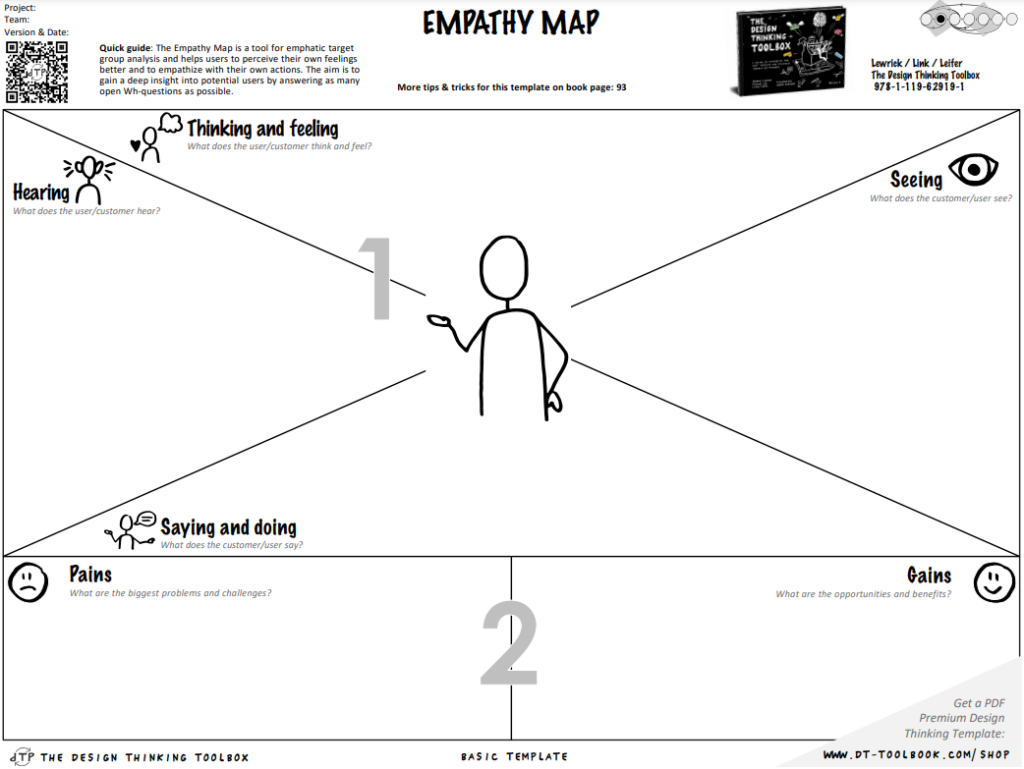Empathy Map
What is it
A tool to help understand your audience by thinking through who they are by what they say, think, do, and feel. By learning about the audience, you will be better equipped to come up with ideas that will connect with the audience best.
When to use it
This tool should be used before starting a project or idea-generation session. It should come in the empathy stage of Design Thinking so that you can get a better grasp of your target audience and have clarity of what you need to do for them.
How to use it
Start by creating a 4-quadrant grid on a piece of paper (if you’re doing it by yourself) or a physical or virtual whiteboard (if you’re working on a team). Underneath the matrix, create two columns labeled Pains and Gains. Now label the quadrants Say, Think, Do, and Feel.
Remember, the goal is to empathize with the audience. The more you can walk in their shoes, the better. After you’ve written down a decent amount of comments and questions in each quadrant, look over it all. What stands out to you? Write down some positives you see reflected in the answers under the Gains column. Any negatives or places for growth can go under the Pains column.
Before writing down things in each quadrant, ponder what your audience might do in each of them. What things might your audience say? Are they celebrating? Are they complaining? Are they curious about what’s going on? What have you heard your audience say?
Begin to ponder about how these things might manifest into action. What are they doing? How are they acting on these thoughts and statements? The ‘Do’ Section can be tricky coming up with things, so try to think through the everyday life of your audience. What might be in their daily routine? What stuff might they be doing based on what they say and think?
Now think about what they might be keeping to themselves in their head: What’s preoccupying them? What are they curious about? What doubts might arise? What things are they excited about? Wonder how they might be feeling because of these thoughts. Put yourself in their shoes. If you were going through a similar situation, how might you feel? If this topic came up, how might you feel if you were thinking and saying the things that you’ve written down for your audience?
Now that you know how the client is feeling and what they could be having a hard time with versus what they’re excelling at, you’ll have a better understanding of how you can help them with your ideas, projects, or events.
More Resources
Template by Design Thinking Toolbook
This toolbox is a prototype, so we would love to get any feedback, questions, or concerns you have about the tools! Click the button above and tell us how your experience was.

